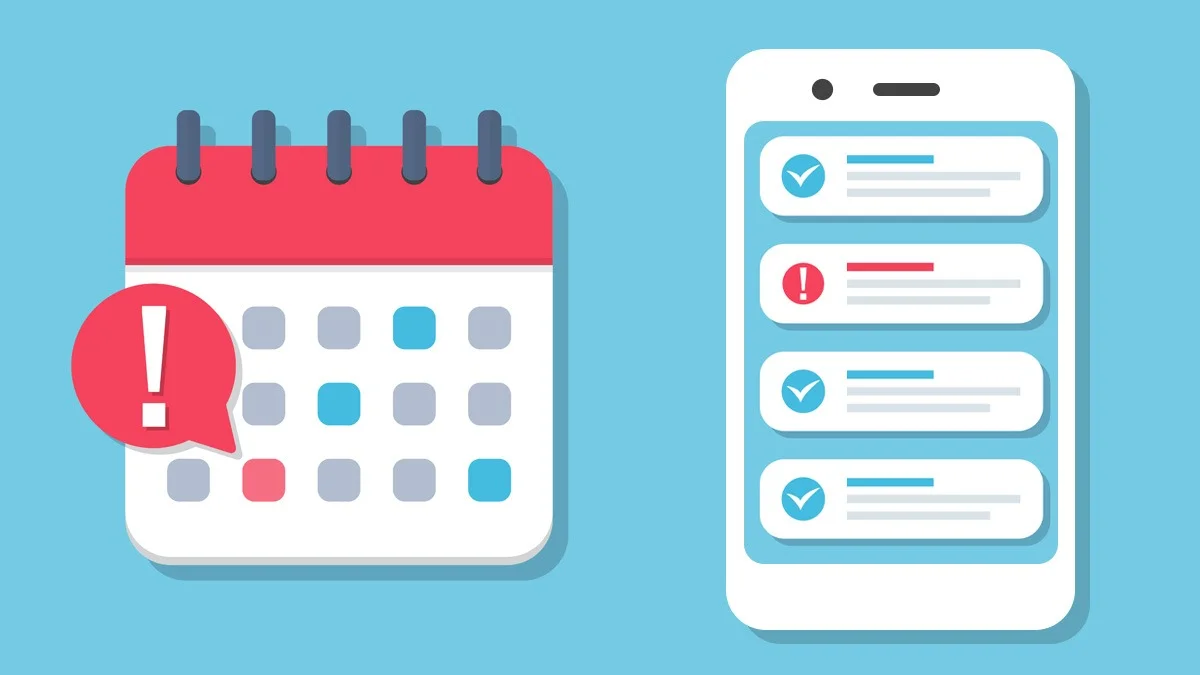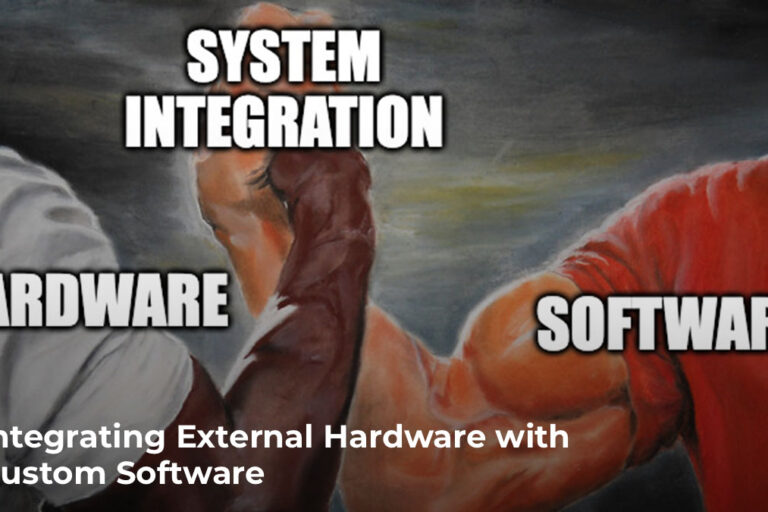The Importance of Sticking To a Schedule in App Development

We are all aware of the importance of sticking to a schedule in our daily lives. A good schedule can make you productive, efficient, and happier overall. This is especially true in the world of app development.
Your development schedule and how well you stick to it will make or break the final application.
Sticking to a schedule in app development is crucial. It allows you to meet your set deadlines, work efficiently, track development progress, plan for software and library updates, and deliver a better quality app. Following a schedule is even more important if you work with a team, as it helps you organize and optimize workflow.
In this article, we will be taking a detailed look at why sticking to a schedule is vital in app development, how it can influence the end product, and give you actionable tips to help you follow through with your app development schedule.
How Sticking To a Schedule Can Benefit You

Allows You To Meet Goals and Deadlines
Scheduling app releases to meet certain times of the year can be highly beneficial; it can provide the app with the necessary initial traction it needs to take off in its user base.
These times of the year may be Christmas, Easter, Halloween, other national holidays, or just any time where analytics suggest that the customer activity in the category of your app will be higher than average.
As an example, you might want to release a fitness app sometime around the new year, as many people take up the resolution to get fit around this time.
Adhering to a schedule will enable the development team to deliver apps on time to meet these goals and deadlines. On the other hand, not following a plan will cause you to miss that desirable deadline, affecting the potential app’s uptake rate.
Overall Better Quality of The App
App development is a complex, multi-stage process. Development occurs in several phases and has multiple components, all of which are important. The stages in an app development process include but are not limited to Market research, UI design, front-end development, back-end development, testing, and deployment.
Having a schedule that considers these factors allows you to divide time appropriately among these various stages such that the result is the best that it can be. This is especially true if there are time constraints; sticking to a schedule allows you to hit that perfect balance of pace and quality, leading to an improved overall quality of the finished product.
Allows You To Consider Software Updates and Library Updates During the Development
During the development process, operating system updates, software updates, and library updates are other considerations. A schedule provides you with an estimated date of completion, which can let you be aware of any critical software or library updates that are projected to arrive at or around that time
Some operating system updates can necessitate code changes in the app for complete compatibility with the new version of the software. Software updates may also make it possible to implement additional features into the application. Similarly, updates to library routines can influence the development process. They can make it easier, more challenging (in some cases), and affect the coding process to a great degree.
Suppose a significant software or operating system comes out during the development process; it may call for a substantial overhaul of half-completed apps to make them up to date with the latest compatibility standards. For instance, if the app being developed is a game, changes to graphic drivers and software require constant updates and hotfixes from the end of the game developer, primarily due to the constantly evolving nature of game design and operation elements.

A great example of this is the triple-A title ‘Cyberpunk 2077’, launched in December 2019. It had supposedly been under development since 2012, when the game was announced. A significant consequence of the seven-year development period was that the new and changing technological hardware, software, and architecture had to be accommodated by the developers. This pushed the game’s release date forward multiple times, yet the game’s optimization was still relatively poor on release.
Anticipating, planning for, and sticking to your development schedule, operating system, and library updates will ensure that there are no extra costs or delays along the way.
Increases the Efficiency of Work
No surprise here. Having a well-thought-out and well-structured schedule is a sure way to contribute to the overall efficiency of the app development process.
Besides improving the ability to work together as a team, the presence of a development schedule has a tangible psychological impact on the developers on an individual level. Humans tend to pace themselves based on how much time they have available. As we have probably all experienced at some point or another, it takes much longer to do something in practice than we expect it to in our heads.
Having a set amount of time for a particular task creates a sense of urgency and reduces the amount of time wasted by developers, consciously or subconsciously.
A schedule makes sure that everyone knows what needs to be done and when it needs to be done. This ensures that there are no significant oversights on the part of the development team.

Allows You To Track Development Progress
A good schedule requires proper planning. Part of this planning involves thinking about the individual app development milestones and when each should be completed.
It is not uncommon for application development teams, especially those that are not very experienced, to initially underestimate the amount of work to be done while overestimating the speed at which progress can be made.
Sticking to a schedule can allow you to track the app development progress and judge how much is complete and what remains to be done. Having a tracked development process will enable you to make more informed decisions. If the rate of progress falls below the initial estimations, you can take appropriate corrective action.
Sets the Right Expectations in Place
Communication is vital, especially when developing an application for a client or a third party. Following a schedule with a structured communication protocol can make it easier to communicate to your client how long the development is expected to take.
If you fail to meet the set expectations, such as taking too long with a project or don’t show progress at an acceptable rate, the client might lose trust in you or your team.
That can lead to an entirely new set of problems, such as the client reallocating certain parts of the project to another development team and withdrawing funding and resources from your team. Worse still, the client could terminate the project entirely due to a lack of feasibility – certainly something no app development team would want.
Sticking to a schedule will also reduce the need for revisions and rework and allow you to focus on more essential parts of the project.
How Do You Ensure You Stick to a Schedule?

Plan Thoroughly Before Creating the Schedule
Each app development process is unique, presenting different challenges that require development teams with matching special abilities.
While it makes sense to rely on the general time-tested and proven elements of an app development schedule, it’s essential to go the extra mile and critically review all the aspects of the app.
Analyze the challenges and development bottlenecks you may expect along the way, and make contingency plans for them in advance in your schedule. Ensure that your developers understand the client’s needs and have the necessary skills and equipment to deliver.
A well-laid-out plan sets expectations from the word go, making it easier for developers to stick to a schedule and avoid unnecessary time-wasting as development goes on.
Break Down the Project Into Small Actionable Tasks
App development projects can be highly complex and time-consuming. From an overall point of view, they will seem daunting and perhaps even undoable (especially within tight deadlines). This is why breaking down the project into small actionable steps or creating development milestones is vital.
While the steps can vary from one app to another, the general steps involved in an app development process are; planning, market research, UI design, front-end development, back-end development, testing, bug-fixing, and release.
Breaking down the development process into these step-by-step processes allows for greater focus on the individual tasks within the stipulated time frame, enabling developers to be on schedule.
It’s always good to have a project plan done before the app development as it makes it easy for managers to keep track of the progress of each task.
They can then intervene quickly if someone in the team is stuck. With out a plan, there will be cost and time overrun.
– Michael Menon, Project Manager at Zco
Allocate Time Appropriately
Take some time to think about how much work each of these individual tasks will require before finalizing the schedule. Project how long they are likely to take, based on the rate you or your team can work.
It is always a good idea to set aside some extra time for the most critical and demanding processes, such as the coding, testing, and bug-fixing processes, to ensure a safety net in case of delays since these processes have a significant influence on the final result.
Don’t overwork
A common mistake many developers make while creating a schedule is overestimating the amount of work they can do in a limited amount of time. Creating tighter schedules can create a sense of urgency and encourage workers to overwork and be fatigued, compromising the app’s quality.
Ensure that the schedule provides ample time for the proper completion of tasks. Try to include breaks between working periods as a way for you and your team to refresh and relax. Breaks are essential for concentration, creativity, and productivity, as efficiency tends to drop when working for extended periods.

Review Progress Frequently
Have daily or at least weekly meetings to check on the app development progress. This smooths out the entire process and makes sure that things that require attention are being dealt with promptly.
Reviewing progress can also give the team a good idea of where they stand currently and the pace that they need to keep up.
Additionally, if the progress being made is at a satisfactory pace, reviews and reports can encourage and motivate the team. Similarly, appropriate corrective measures can be taken if progress is less than adequate.
Review and Adjust the Schedule as Necessary
Once created, a schedule is not meant to be set in stone; there should be room for necessary adjustments.
It is highly likely that once you create and adopt the schedule, there will be opportunities for optimizations that show up from time to time. Consider them, and if they promise a tangible improvement on the app, they might be worth adding to the schedule.
Try not to alter it too often, though, as that might interfere with the client’s projected deadlines. Instead, take your time to make the best possible schedule with the information you have, and then optimize it to better suit present circumstances if necessary.
Final Thoughts
Sticking to a schedule in app development is essential. It increases the efficiency of work, allows you to meet predefined goals and deadlines, enables you to set realistic expectations with your clients, track development progress, and plan for software and library updates during development. It also improves the overall quality of the final product.
To ensure that you stick to the schedule throughout development, take time to think through the app’s deliverables before creating a schedule. It’s also important that you break down the process into smaller tasks, leave time for breaks, and be open to review and adjust the schedule if need be.












